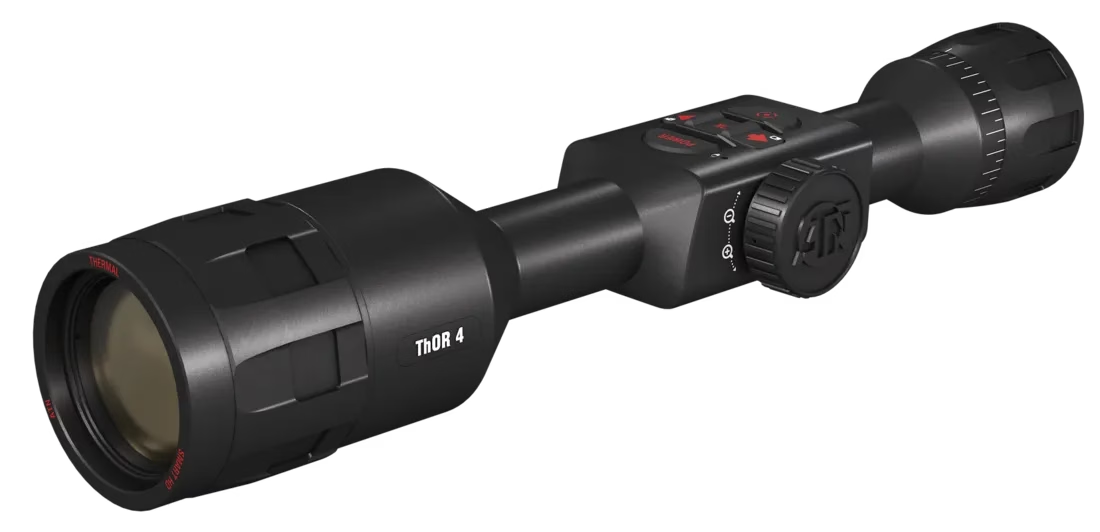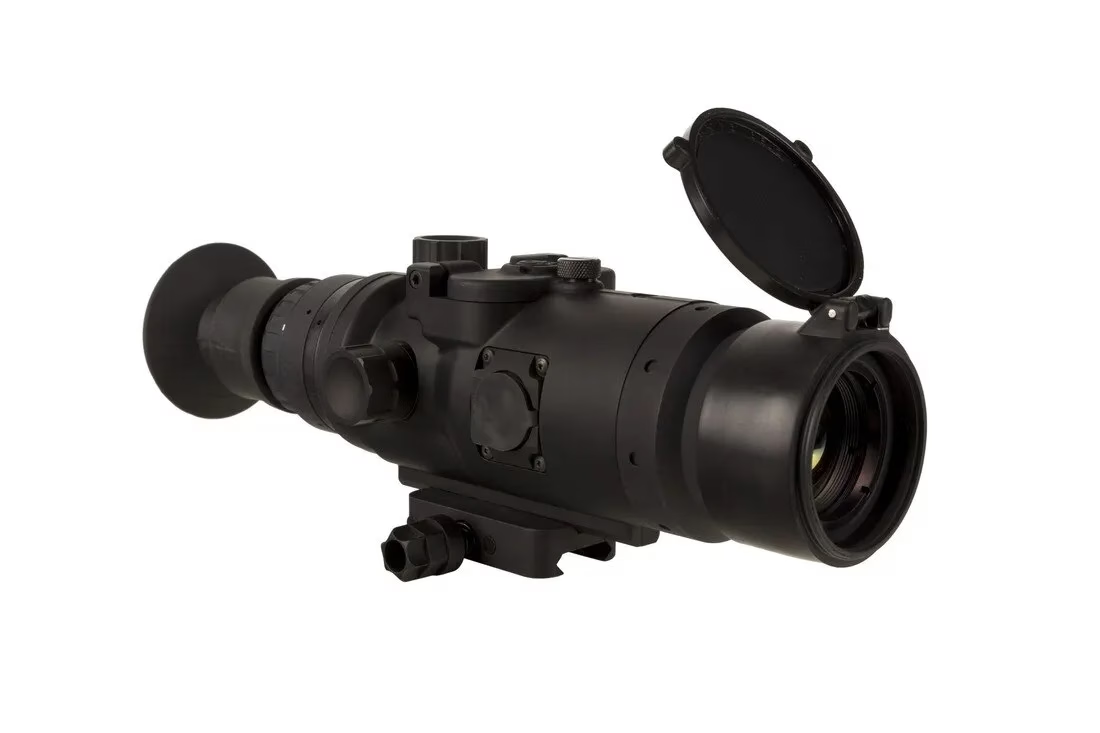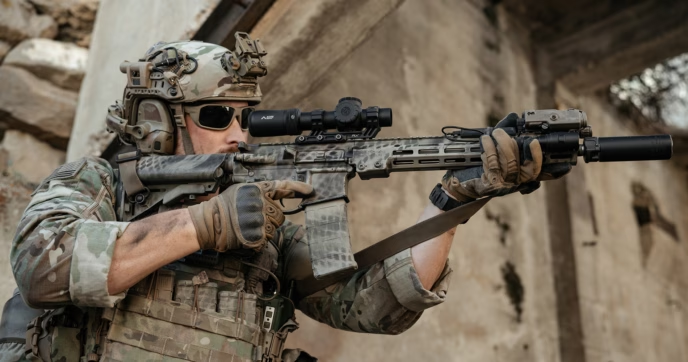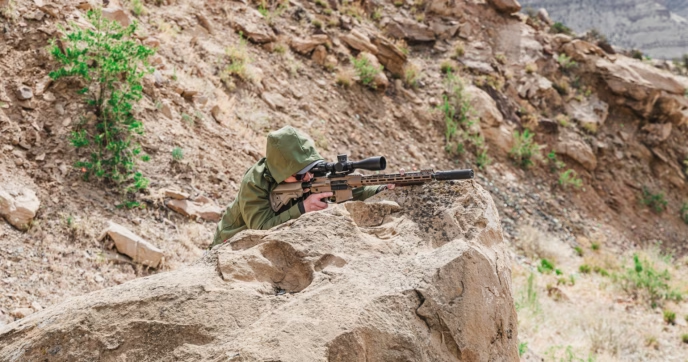Thermal is the new frontier in advanced optical technology. As night vision becomes more and more common, thermal remains an eclectic, niche product seldom seen or employed by the average hunter or marksman, leaving many wondering, what are thermal optics?
Despite its rarity, thermal vision offers an incredible advantage for hunters, allowing users to penetrate even the most effective camouflage and find their game in any conditions, whether clear, foggy, or dead of night.
Still, like most things, thermal optics are not without their drawbacks. To employ them effectively and make the most of their incredible efficiency at spotting prey and predators alike, you need to understand how they work.

Understanding Thermal Scopes
Thermal imaging scopes are made up of three main components: the sensor, the processor, and the screen or readout. There are also various lenses, wires, and whatnot, but the aforementioned three are the big ones you need to know about.
The sensor is a specialized piece of hardware capable of detecting infrared energy waves within a certain spectrum. These waves are given off by everything that has any amount of heat—even things we wouldn’t traditionally think of as having heat, such as ice or snow. In this context, though, anything with a temperature above absolute zero has heat, and emits some amount of infrared energy as a result.
The sensor detects this energy, and most importantly, perceives the difference in the level of energy coming from different places. This information is then fed to the processor, which is essentially just a small, single-function computer. The processor converts the data about the infrared waves observed into a format we can make use of: an image.
This image is then rendered by the processor onto the screen, in the case of standalone thermal optics, or through a different form of output in the case of integrated thermal devices such as an ECOTI, which is a type of device that combines with night vision in order to create a hybrid image for the user.
The resulting image is rendered in a heat-map fashion, with one color representing higher heat and another color representing lower. While the stereotype of a thermal image typically uses yellow or red to denote heat and a blueish-purple color for cold, most modern optics utilize a black-and-white color scheme.
This makes spotting sources of significant heat incredibly easy, even if those sources are well-camouflaged. A warm-blooded creature like a deer or coyote will stand out starkly amongst its relatively cold surroundings and can be seen regardless of light or atmospheric conditions.
The downside to these types of optics is that their resolution and image quality are typically limited. A thermal scope doesn’t see things like fur color or pattern, or often offer enough detail to discern between objects of similar heat levels such as individual leaves or trees. This means that unlike night vision, it’s not very helpful for nighttime navigation, relegating it solely to the purpose of finding game.
Thermal also usually doesn’t offer a particularly detailed image of the target, which can be problematic for certain types of hunting. The overall shape of the target is usually quite clear, but finer details often aren’t. This means that you’ll be able to easily spot an animal like a bear, which would be hard to mistake for anything else. A coyote, on the other hand, may be indistinguishable from the neighbor’s similarly-sized dog.
One method to get around this limitation is to employ a handheld thermal optic to spot game, then a traditional or night vision scope as appropriate to verify it and fire your shot. This does, of course, necessitate buying two different optics, which can quickly become very expensive.

Choosing the Best Thermal Scope for Your AR-15
While thermal optics can hardly be called essential hunting equipment, a thermal scope can offer a huge amount of increased capability for your AR-15 or hunting rifle. In selecting your scope, there are a few key attributes to keep in mind.
Thermal Detector Resolution
The thermal detector or sensor is one of the largest determinants of your scope’s optical performance. Resolution is essentially a measure of how much detail your image will have, so the higher the resolution of your sensor, the more finely rendered your image will be, all else being equal.
However, everything else is seldom equal, and factors such as the processor’s algorithm will also play a pivotal role in reducing noise and sharpening the image.
Additionally, higher thermal detector resolution is not all upside—it comes with its drawbacks as well. A higher-resolution detector will generally result in reduced magnification power and a smaller field of view, again assuming that the other factors in the scope remain unchanged.
Higher-resolution detectors also tend to correspond with an increase in price, as well, often significantly so. As such, it’s important to take the time to thoroughly consider how much resolution you really need for your application, and how much you can afford to spend on a top-tier thermal scope.
Frame Rate
Assuming that your thermal scope will be used for something other than target practice—and there is little reason for anyone to buy a thermal optic just to poke holes in paper targets—frame rate will also be of paramount importance.
Frame rate, also sometimes called refresh rate, is a measure of how many times per second the image shown on the screen is rendered. The higher the refresh rate, the more crisply you will be able to see movement and the less lag there will be between what you see on the screen and what is happening in real life.
Any amount of lag between the image and real life is going to be a detriment when hunting, as animals can move without warning and may already be moving when spotted. With any computer-rendered image, there will also be a small amount of lag, but choosing a scope with a high refresh rate can help minimize it.
Magnification & FOV
These two attributes are going to be an important consideration in any hunting scope. The amount of magnification you have available plays a direct role in the difficulty of landing an ethical shot at extended ranges. More magnification will offer a more detailed image of the target at distance, which in turn contributes to an easier time delivering a round precisely where you want it.
Field of view, for its part, plays a role in spotting game. A larger field of view allows the user to survey a larger area at one time, which makes spotting game faster and more efficient. It also allows for greater awareness of the space around the target when lining up the shot and makes it easier to track a moving animal without it leaving the confines of your field of view.
Both of these factors will together play a direct role in how easy it is to spot an animal, track it, and line up an effective shot.
Durability
If you plan to take your scope out into the field, durability is also going to be an important factor. You never really know what you’re going to encounter. Unexpected rain may suddenly test your optics water resistance, or a sudden bump against the wall of your blind or even just the trunk of a tree could put its ruggedization to the test.
The simple truth is, operating in nature can place certain demands on all your equipment, and being durable enough to meet those demands is essential for every piece of gear you carry. It doesn’t matter if your scope produces the cleanest, clearest image in existence if it breaks before you spot your first buck.
While there are few objective measurements for durability, sticking to established manufacturers with a long track record of producing tough, reliable optics will generally ensure that your scope is suitably engineered to survive the demands of your outdoor pursuits.
Battery Life
Lastly, you’ll want to consider the battery life of your scope. Thermal optics are power-hungry devices. Nearly every scope on the market has a battery life of at least a few hours, which is typically sufficient for your average hunt, but longer battery life is always going to be a significant quality-of-life upgrade.
Longer battery life means fewer battery changes or charges, and most importantly, reduces the chances of your scope going dead just as you spot the animal you’ve been waiting for.
Most scopes use onboard batteries as their primary source of power, whether replaceable or rechargeable. Some models also offer the ability to supplement their onboard batteries with remote battery packs, which can be installed on your rifle, usually near the buttstock, and then connected to your scope with a cable.
These remote packs can often add hours to your scope’s operating time, but also usually pounds your rifle as well, so they may not be suitable for those who spend a great deal of time hiking or walking to their hunting location.
Mount Compatibility
It’s worth noting that not all thermal scopes utilize scope rings. While many do, others have proprietary or less common mounting configurations that can make connecting your scope to a traditional bolt-action hunting rifle challenging.
This is particularly true for scopes that come with an integrated cantilevered scope mount, which is all but impossible to mount to the average bolt-action. More information on the intricacies of scope mounts and their variations can be found in our Scope Mount Buyer’s Guide.
Legal Considerations
While thermal scopes are excellent tools for certain types of hunting, it’s important to note that they are not legal for hunting in all states or all scenarios. Before setting out into the field with your thermal optic, be sure to check your local laws and regulations to ensure it’s permitted for hunting.

Conclusion
Thermal optics are an incredible technology that offers unmatched advantages for hunters, but they’re not without their drawbacks. Understanding the uses and limitations of thermal imaging is essential to making an informed decision on whether or not a thermal scope is right for your AR-15.



